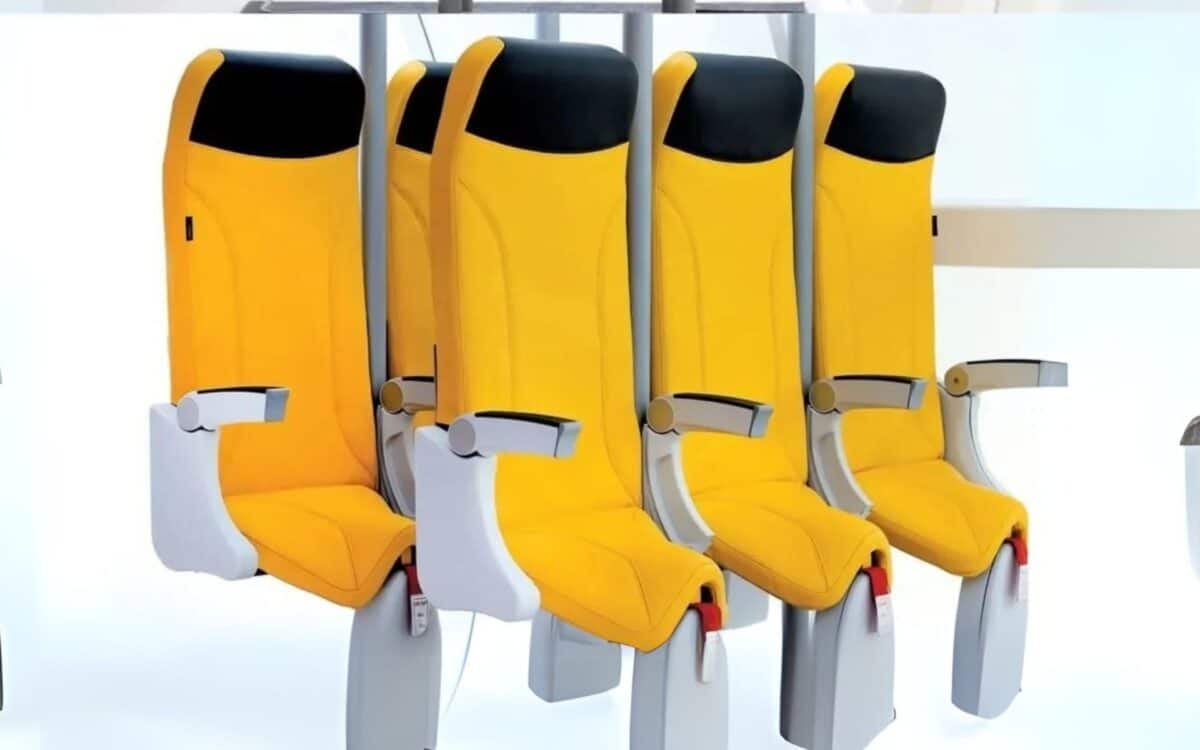Some low-cost airlines are preparing to introduce standing-only seats on short-haul routes as early as 2026, in a move set to challenge traditional cabin layouts and airline economics.
The concept, which has circulated for over a decade, is now advancing toward implementation following successful safety evaluations and regulatory clearance. Airlines involved in the early development stages are revealing few details publicly, but industry sources suggest that several carriers are actively studying the model.
According to a report by Escape, initial deployments may begin on high-density domestic routes, targeting ultra-budget travelers willing to sacrifice comfort for price.
New Design, More Passengers, Lower Prices
These “perched quasi-seats” will allow passengers to lean on a padded shelf at an angle rather than sit conventionally, freeing up space for additional rows.
According to internal figures, retrofitting a Boeing 737 with 15 rows of standard seats and 10 rows of standing berths, instead of the usual 24 rows of full seating, would increase capacity from 189 to 230 passengers per flight.

Airlines argue this could enable fares as low as £1 to £5 ($2.00 to $10.00), undercutting even the cheapest current flights.
For instance, Ryanair currently offers one-way fares like Manchester to Paris for £14.99 (around $31.00). CEO Michael O’Leary, who is expected to receive a $100 million bonus this year, has championed the standing-seat model since 2012.
Test Markets and Potential Routes
This model would apply exclusively to flights under two hours, with one of the first potential corridors being Sydney to the Gold Coast, a busy short-haul market.
Another high-volume route is Sydney to Melbourne, a 1.5-hour trip with over 9 million seats sold in 2024, according to OAG Aviation. At present, Jetstar prices start around $79 for that trip, leaving room for considerable savings if the new model is adopted.
No airline has officially confirmed adoption, but early prototypes of the padded perches were seen in yellow, suggesting possible links to Spirit Airlines, a US budget carrier known for its bright yellow branding. Currently, a one-way Spirit flight from New York to Los Angeles costs $100.

Safety Certification and Unresolved Concerns
Reports indicate the new seating has passed safety tests and cleared regulatory hurdles, but critics remain unconvinced. Concerns include turbulence safety, emergency evacuation, and the unsuitability for elderly, disabled, or overweight passengers.
Questions around baggage storage are also unresolved. Some prototypes appear to lack overhead bins, prompting jokes that passengers might be limited to carrying just a wallet. There’s even speculation that cabin space could be reallocated to accommodate more passengers.
Public Reaction: Praise, Satire, and Alarm
Reactions on social media have been polarizing. Some see it as an innovative cost-saver for quick hops, others as an erosion of passenger dignity:
One year later these will cost what regular seats cost and regular seats will cost double what they used to cost, as if it’s a luxury to sit down – said one user.
Corporations will do anything other than paying their CEOs slightly less money – wrote Joshuahedley.
A more sarcastic take from Bruce W. Bracket:
Airlines: ‘Sorry your bag is 5 pounds over the limit. And you can only have one carry on.’ Also airlines: ‘Let’s add 50 more people to each flight.’
We are humans, not cattle – Another user simply wrote.
Yet some are optimistic:
I for one actually support this. It’s perfect for short flights and will actually allow me to stretch my legs. I don’t really have to sit fully for a 40-minute short flight across the pond anyway. Don’t think it’s meant for Atlantic flights or long haul ones.









